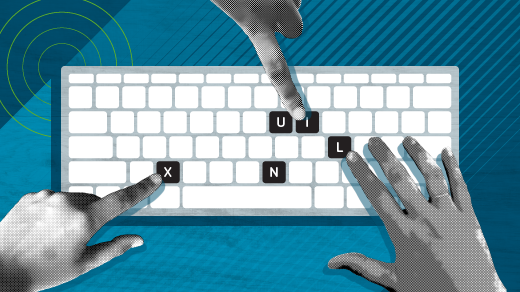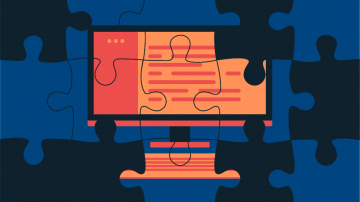There are few Linux users who don't remember the first time they discovered you could boot a computer and run Linux on it without ever actually installing it. Sure, many users are aware that you can boot a computer to an operating system installer, but with Linux it's different: there doesn't need to be an install at all! Your computer doesn't even need to have a hard drive in it. You can run Linux for months or even years off of a USB drive.
Naturally, there are a few different "live" Linux distributions to choose from. We asked our writers for their favourites, and their responses represent the full spectrum of what's available.
1. Puppy Linux
"As a prior Puppy Linux developer, my views on this are rather biased. But what originally attracted me to Puppy was:
- its focus on lower-end and older hardware which is readily available in 3rd world countries; this opens up computing for disadvantaged areas that can't afford the latest modern systems
- its ability to run in RAM, which when utilized can offer some interesting security benefits
- the way it handles user files and sessions in a single SFS file making backing up, restoring, or moving your existing desktop/applications/files to another install with a single copy command"
"It has always been Puppy Linux for me. It boots up quickly and supports old hardware. The GUI is super easy to convince someone to try Linux for the first time." —Sachin Patil
"Puppy is the live distro that truly runs on anything. I had an old discarded microATX tower with a broken optical drive, literally no hard drive (it had been removed for data security), and hardly any RAM. I slotted Puppy into its SD card slot and ran it for years." —Seth Kenlon
"I don't have that much experience in using USB drive Linux distros but my vote goes to Puppy Linux. It's light and perfectly suitable for old machines." —Sergey Zarubin
2. Fedora and Red Hat
"My favourite USB distro is actually just the Fedora Live USB. It has a browser, disk utilities, and a terminal emulator so I can use it to rescue data from a machine or I can browse the web or ssh to other machines to do some work if needed. All this without storing any data on the stick or the machine in use to be exposed if compromised." —Steve Morris
"I used to use Puppy and DSL. These days I have two USB Keys: RHEL7 and RHEL8. These are both configured as full working environments with the ability to boot for UEFI and BIOS. These have been real-life and time savers when I'm faced with a random piece of hardware where we're having issues troubleshooting an issue." —Steven Ellis
3. Porteus
"Not long ago, I installed VMs of every version of Porteus OS. That was fun, so maybe I'll take another look at them. Whenever the topic of tiny distros comes up, I'm always reminded of the first one that I can remember using: tomsrtbt. It was always designed to fit on a floppy. I'm not sure how useful it is these days, but just thought I'd throw it in the mix." —Alan Formy-Duval
"As a longtime Slackware user, I appreciate Porteus for providing a current build of Slack, and a flexible environment. You can boot with Porteus running in RAM so there's no need to keep the USB drive attached to your computer, or you can run it off the drive so you can retain your changes. Packaging applications is easy, and there are lots of existing packages available from the Slacker community. It's the only live distro I need." —Seth Kenlon
Bonus: Knoppix
"I haven't used Knoppix in a while but I used it a lot at one time to save Windows computers that had been damaged by malware. It was originally released in September 2000 and has been under continuous development since then. It was originally developed and named after Linux consultant Klaus Knopper and designed to be used as a Live CD. We used it to rescue user files on Windows systems that had become inaccessible due to malware and viruses." —Don Watkins
"Knoppix was hugely influencial to live Linux, but it's also one of the most accessible distributions for blind users. Its ADRIANE interface is designed to be used without a visual display, and can handle all the most common tasks any user is likely to require from a computer." —Seth Kenlon
Choose your live Linux
There are many that haven't been mentioned, such as Slax (a Debian-based live distro), Tiny Core, Slitaz, Kali (a security-focused utility distro), E-live, and more. If you have a spare USB drive, put Linux on it and use Linux on any computer, any time!










17 Comments